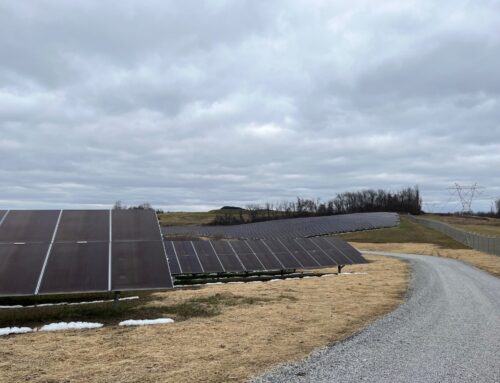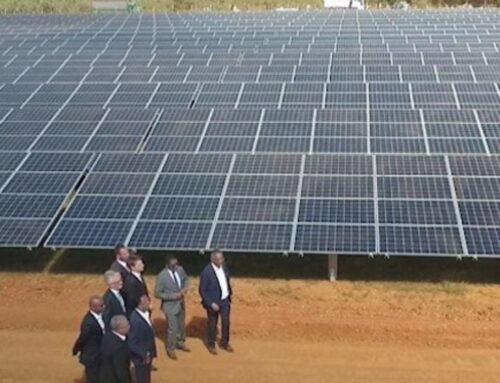How we can make the most of SB24-212 and promising new renewable energy siting resources in Colorado
September 23, 2024
This piece is co-authored by Nelson Falkenburg (CATF), Severiano DeSoto (WRA), Chris Menges (TNC), and Daly Edmunds (Audubon Rockies) on behalf of the Colorado Energy Siting Coalition, a group of conservation and environment NGOs advancing siting and permitting of renewable energy while minimizing impacts to wildlife resources and maximizing benefits for communities. The coalition is led by Audubon Rockies, Clean Air Task Force, Conservation Colorado, The Nature Conservancy, Theodore Roosevelt Conservation Partnership, and Western Resource Advocates.
An increasing number of people living in the U.S. are experiencing negative environmental, health, and economic impacts from climate change. As with many communities across the West, Colorado residents are facing reduced snowpack, extreme heat, drought, flooding, increased wildfires, biodiversity loss, higher incidences of heat-related illnesses, and economic stressors from lost or compromised recreational opportunities, to name a few.
Decarbonizing the electricity sector is critical to mitigating the worst impacts of climate change. To meet Governor Jared Polis’ greenhouse gas reduction targets calling for 100% renewable energy generation by 2040, as well as goals set by the state legislature, Colorado will need to significantly expand utility-scale wind and solar projects.
A recent study by the Colorado Energy Office finds that the state must triple the amount of wind power and increase solar energy generation fivefold by 2040 to achieve these goals. While Colorado is a leader in wind and solar power production, the state must increase the pace and scale of renewable deployment to hit its goals. Siting and permitting these projects must be done in a smart and effective manner, while supporting communities in the energy transition and safeguarding wildlife resources.
Challenges to siting and permitting in Colorado and how to overcome them
In Colorado, county commissioners and local planners are tasked with making decisions about siting and permitting renewable projects in their communities. While some local governments find it straightforward to plan and permit renewable energy projects, others face challenges. These may include limited staff time and technical capacity, opposition from constituents, or uncertainties with permitting the construction of technologies new to their communities.
According to a recent survey of large-scale wind and solar developers by Lawrence Berkeley National Laboratory, local opposition and restrictive local zoning ordinances are the leading causes of project cancellations and major delays across the country. A new report from Columbia University’s Sabin Center for Climate Change Law also finds local opposition to wind and solar development increased by 29% last year, in addition to a 73% increase since 2023 in local laws and regulations seeking to block or delay renewable energy projects.
Colorado is a microcosm of these national trends, as some counties have passed restrictive ordinances and banned projects through moratoria. This approach conflicts with voter sentiment statewide, as most Coloradans widely support renewable energy projects built in alignment with their wildlife habitat conservation values. According to annual polling, approximately 78% of Colorado voters believe expanding clean energy is possible while preserving natural areas, wildlife habitat, and the character of their communities. Research supports these findings and shows building renewable energy projects while meeting community and conservation goals is entirely possible. Through state-level policy and coordinated planning between the state and local governments, states can accelerate building renewable energy projects while avoiding, minimizing or mitigating impacts to the environment and benefiting neighboring communities.
SB 24-212 “The Renewable Energy Projects Act”: An important first step
In an effort to meet Colorado’s climate, conservation, and community goals, the Energy Siting Coalition, a group of conservation and climate non-governmental organizations (NGOs), worked alongside partners and state officials in the 2024 legislative session to draft and pass SB24-212 “The Renewable Energy Projects Act”.
The legislation received key support from Senate and House leadership and Governor Polis, who declared in his 2024 State of the State address: “[W]e need to cut red tape that is holding back local investments and unprecedented federal resources in renewable and clean energy … We will be supporting legislation, led by President Fenberg and Senator Hansen, to expedite these critical projects.”
The legislation includes:
- Resources for counties, including technical support for ordinance development, renewable energy project permitting, and model ordinances, to help fill capacity gaps at the local level;
- Direction to the state’s Department of Natural Resources to identify areas of high-priority habitat and provide best management practices for avoiding and managing the wildlife impacts from renewable energy projects;
- Required consultation with Tribes, and the consideration of potential impacts, for the construction of facilities in the Brunot Treaty area; and
- Requirements for the Colorado Energy Office to evaluate current barriers and potential opportunities to improve renewable energy siting in Colorado long-term.
This new law is a win for local governments, the renewable energy industry, wildlife, and conservation organizations, underscoring the importance of building consensus around renewable energy siting policies and practices.
The future of renewable siting policy in Colorado
While the passage of SB24-212 is a promising start, there is still more work to be done to ensure it is implemented effectively.
To build a clean energy future that centers Colorado’s vision for thriving communities and wildlife conservation, stakeholders will need to work together and ensure the law delivers on its statutory requirements, including identifying what’s working well and where additional resources are needed. The progress achieved through SB24-212 can serve as the foundation for the future of energy siting policy in Colorado, but to guarantee long-term success for the state, everyone will have to chip in.
State agencies can effectively fulfill the new authorities in SB24-212 by:
- Providing counties with useful technical guidance through a repository of effective renewable energy siting ordinances;
- Using the best-available science when identifying high-priority habitats and best management practices for minimizing impacts to wildlife habitats; and
- Evaluating the state of renewable energy deployment in Colorado through detailed, fact-based analysis.
Local governments can be effective partners in, and champions for, renewable energy projects in their geographies by:
- Providing state agencies with input to ensure the technical resources offered by the state are beneficial and suit their needs;
- Providing state agencies with information about how existing siting and permitting processes could be improved; and
- Leveraging resources provided through SB24-212 to support good siting and permitting decisions for their communities.
Renewable energy developers can work with the state and local government to advance clean energy alongside other conservation and community goals by:
- Collaborating with state agencies to adopt best management practices for minimizing project impacts to wildlife habitat;
- Partnering with communities that seek technical assistance and agency input; and
- Identifying community engagement and community benefit best practices and socializing this information among developers and with state agencies.
NGOs, including the Energy Siting Coalition, can collaborate with stakeholders and build toward future reforms by:
- Providing state agencies with accurate information and analysis to inform the evaluation, renewable energy ordinance development, and best management practices;
- Encouraging developers, Tribes, and local governments to leverage technical, science-based resources to improve renewable energy siting statewide; and
- Supporting state agencies to ensure an ecosystem of federal investments, state policies, and local resources all align to drive improved siting outcomes.
The Energy Siting Coalition looks forward to continuing its collaboration with renewable developers, local governments, state agencies, the Polis administration, Tribes, and others to ensure the state of Colorado continues to lead on energy and climate.
For more information, or to get involved, email Nelson Falkenburg at [email protected].
Search
RECENT PRESS RELEASES
Related Post



